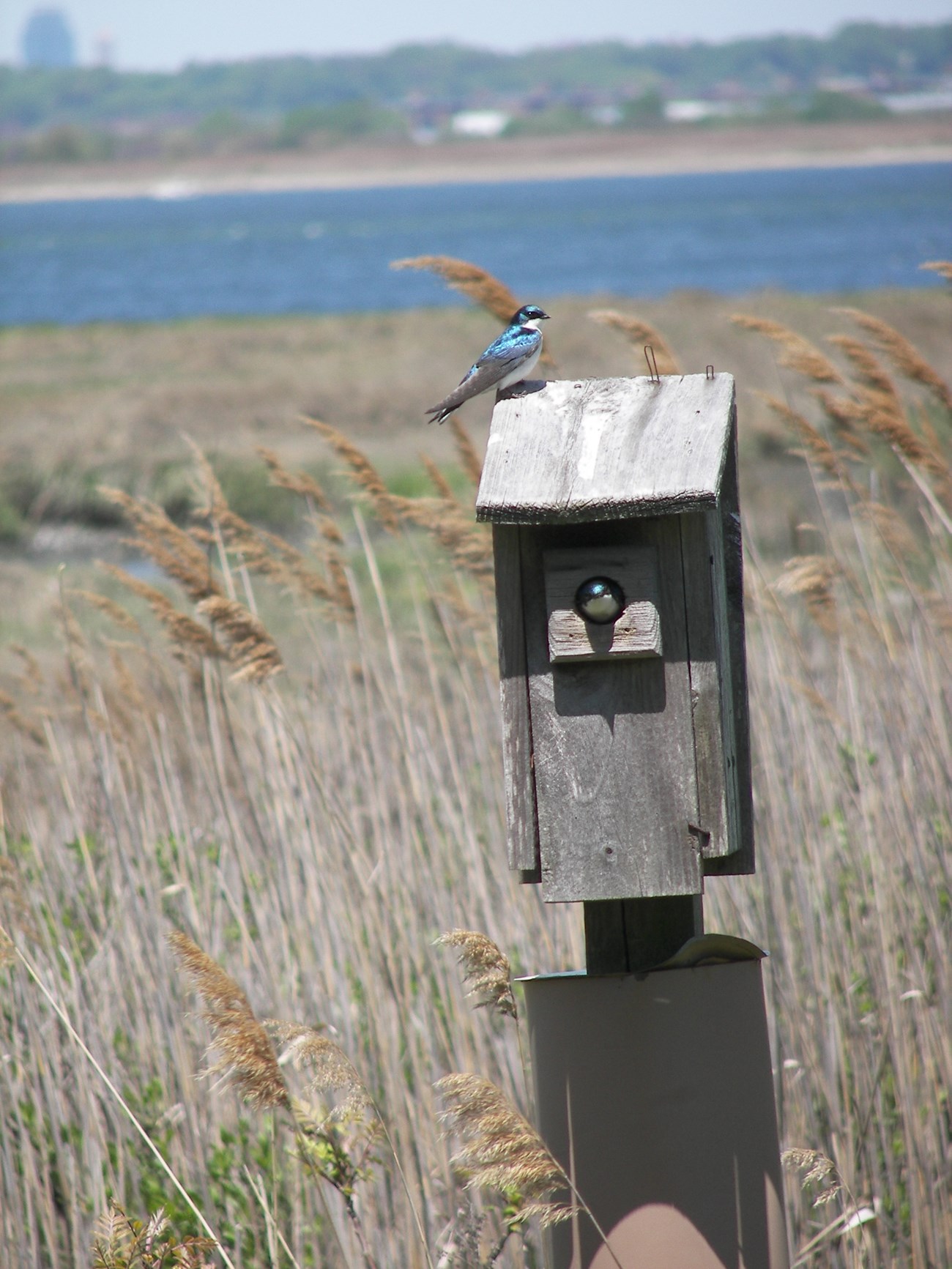
NPS Photo Iridescent blue on top and white below, the tree swallow is easily distinguished from the larger blue and reddish barn swallow, though both share a streamlined form and an acrobatic flying style. Their maneuverability and speed helps them pick their insect prey (frequently mosquitoes) out of midair. Tree swallows naturally nest in cavities in trees, which have become less numerous as New York City has grown. These days, tree swallows can frequently be seen using nest boxes around Gateway. Tree swallows (tachycineta bicolor) are iridescent blue on top and white below. They are easily distinguished from the larger blue and reddish barn swallow, though both share a streamlined form and an acrobatic flying style.
Tree swallows are wide spread and common. They are mainly found in open country near water, marshes, meadows, and lakes.
May pick items from surface of water while flying. Diet is mainly insects, especially in the summer. Perches in bushes to eat berries, and sometimes feeds on ground, especially in cold weather. Tree Swallows nest in tree cavities; they also readily take up residence in nest boxes.
A group of swallows is called a murmur. Tree swallows can form enormous flocks of thousands of birds. Tree swallows winter further north than any other swallow.
"Tree Swallows" Audubon Field Guide Tree Swallow | Audubon Field Guide
"Tree Swallows" All About Birds The Cornell Guide Tree Swallow Overview, All About Birds, Cornell Lab of Ornithology |
Last updated: February 2, 2021
